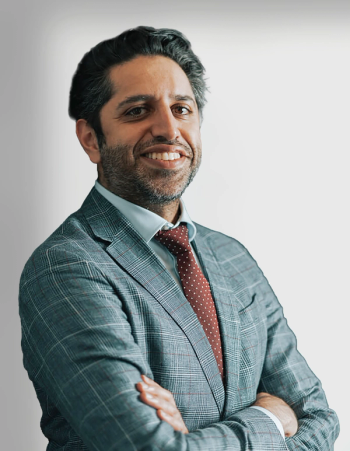
Recap of the 3rd Annual San Diego Dermatology Symposium
The 3rd Annual San Diego Dermatology Symposium (SDDS) was held in-person for the first time on March 11 to 13, 2022, at the Hilton San Diego Bayfront, in California.
The 3rd Annual San Diego Dermatology Symposium (SDDS) was held in-person for the first time on March 11 to 13, 2022, at the Hilton San Diego Bayfront, in California. Attendees had the opportunity to learn and network, and many said this was their first live in-person meeting in the last 1 to 2 years. Here is a recap of some of the lectures that happened at SDDS.
Erythema Multiforme, Stevens-Johnson Syndrome, and Toxic Epidermal Necrolysis
Scott Worswick, MD, a board-certified dermatologist at the University of Southern California (USC), Los Angeles, led a discussion of the differential diagnosis for erythema multiforme (EM), Stevens-Johnson syndrome (SJS), and toxic epidermal necrolysis (TEN). He complied a review of the current literature on treatment options.1
First, he detailed differential diagnosis of various conditions that can cause mucosal erosions, targets or targetoid lesions, dusky erythema, and skin pain. There were 6 patient cases presented, which included presentations of cytomegalovirus infection, a hot water burn injury, paraneoplastic pemphigus, SJS-TEN overlap, Chikungunya virus infection, and linear IgA bullous disease.1
Mild self-limited EM can be treated with topical steroids and magic mouthwash, according to Worswick, and prophylaxis for oral acyclovir 400 mg twice daily has been shown to decrease recurrent attacks of EM in patients with HSV as a trigger.1 Another suggestion is oral levamisole 150 mg daily for 3 days and systemic steroids for EM flares, although levamisole is not currently available for human use in the U.S. Other treatments for persistent or recurrent EM control include dapsone, thalidomide, apremilast (Otezla; Amgen), adalimumab (Humira; AbbVie), mycophenolate, and rituximab.1 Of these, Worswick has found thalidomide to be the most effective.
In several studies, cyclosporine was found to have an improved mortality benefit in treatment of SJS/TEN.1 However, cyclosporine is generally not used in patients with renal dysfunction or on dialysis, so the mortality benefit may be skewed, Worswick explained. Lower mortality was also seen in treatment with etanercept (Enbrel; Amgen) and IVIG with steroids, but not with steroid monotherapy, IVIG monotherapy, or supportive care alone.1 In Worswick’s experiences at UCLA and USC, as well as several published studies, treatment with etanercept was associated with arrest of progression, increased rate of re-epithelialization, and decreased mortality. No significant complications or adverse events (AEs) were seen with treatment. One study to look out for is an upcoming phase III randomized clinical trial comparing supportive care, cyclosporine, and etanercept for SJS/TEN.1
Oral Therapy for Psoriasis
John Koo, MD, FAAD, a board-certified dermatologist and director of the UCSF Psoriasis and Skin Treatment Center, and Marwa Hakimi, MD, a board-certified dermatologist, clinical research fellow at the Psoriasis and Skin Treatment Center, provided a discussion on traditional oral therapies for psoriasis, focusing on the use of cyclosporine and acitretin (Soriatane; AbbVie).2 Neoral (cyclosporine modified) is preferred over the conventional formulation Sandimmune (SIM), given its increased bioavailability, more predictable absorption, and higher percent of patients achieving remission on therapy, according to the presentation.
Koo’s 3 main clinical pearls for cyclosporine are2:
- Do not exceed a total of 5 mg/kg/day;
- Do not allow the creatinine to increase by greater than 30%; and
- Do not use continuously for longer than 10 years.
Cyclosporine may be started at a high dose approach at 4-5 mg/kg/day which is favored in the U.S., or a low dose approach at 2.5 mg/kg/day which is favored in Europe, the physicians explained. High starting dose may be especially beneficial as a “crisis buster” for patients experiencing a rapid flare, erythrodermic patients, or recalcitrant cases that have failed many treatment modalities. Cyclosporine should not be discontinued abruptly, the physicians cautioned, rather, the dose should be tapered down and another treatment modality should be optimally therapeutic by the time tapering of cyclosporine is initiated.2
Acitretin has been shown to be helpful in prevention of non-melanoma skin cancers, but may also be successful as psoriasis monotherapy for patients with pustular psoriasis and in elderly patients.2 Other patients to consider include those who are not good candidates for biologics, patients receiving phototherapy, and patients who are not in a rush for improvement, the presentation explained. Staying at low dose such as 25 mg per day or less appears to suggest successful effects with percentage of body surface area (BSA) involvement reduction and lower incidence of AEs. Of note, 25 mg of acitretin may be added to a patient whose phototherapy has already been maximized in terms of dosimetry. In these cases, it is important to decrease the dosimetry by 50% to avoid burn. Acitretin may take 3 months or longer to show benefit in psoriasis patients and may be most effective in combination with other treatments as a therapeutic enhancer.2
Lasers
E. Victor Ross, MD, FAAD, a dermatologist in San Diego, California, began his talk with an educational journey through the history of lasers. He notes that pulsed dye laser (PDL) was the first laser that was really designed for its job. In the 1990s, 2 major procedures changed the way that cosmetic laser dermatology was delivered: laser hair reduction, and full face and chest/neck (intense pulse light) IPL treatments.3
In present day, cosmetic laser therapy emphasizes 3-dimensional restoration of the skin using a layered approach. The three main focuses for rejuvenation are surface color, texture and tone, and contour of the skin.3
For facial rejuvenation and acne scars, non-ablative fractional and ablative fractional lasers are the most effective options. Potassium titanyl phosphate (KTP), followed by PDL and IPL, are the best options for vascular lesions. Alexandrite, 810 nm diode, 980 nm diode, and neodymium-doped yttrium aluminium garnet (Nd YAG) may also be considered. The most commonly used lasers for tattoo removal are Q-switched 532 nm, ruby, alexandrite, and 1064 nm. Q-switched 532 nm, ruby, and alexandrite are also the best lasers for epidermal pigmented lesions, although post-inflammatory hyperpigmentation is a concern.3
Conditions that are more difficult to treat include melasma, diffuse warts, flushing, vascular lesion in patients with darker skin, skin tightening, acne, some leg veins, and rejuvenation of the neck. While some lasers have been reported to be effective, these conditions represent an ongoing challenge and opportunity for future growth and innovation in lasers.3
References:
- Worswick S. Erythema Multiforme, Stevens-Johnson Syndrome, and Toxic Epidermal Necrolysistis. Presented at: 3rd Annual San Diego Dermatology Symposium; March 11 to 13, 2022; San Diego, California.
- Koo J; Hakimi M. Oral Therapy for Psoriasis. Presented at: 3rd Annual San Diego Dermatology Symposium; March 11 to 13, 2022; San Diego, California.
- Ross EV. Lasers. Presented at: 3rd Annual San Diego Dermatology Symposium; March 11 to 13, 2022; San Diego, California.
Newsletter
Like what you’re reading? Subscribe to Dermatology Times for weekly updates on therapies, innovations, and real-world practice tips.

















